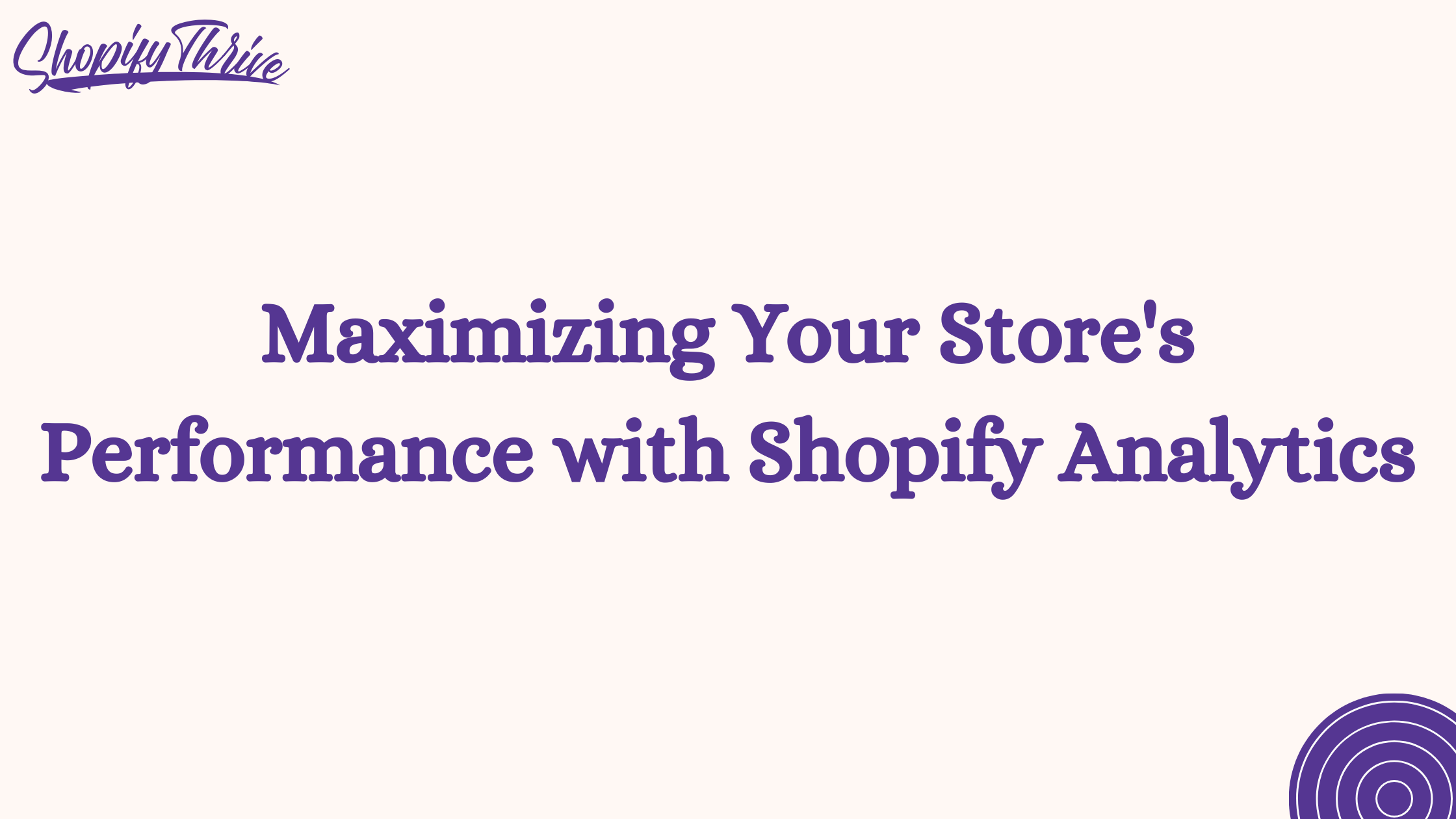
Noor
Maximizing Your Store’s Performance with Shopify Analytics
- September 16, 2023
- , 5:59 pm
- , Shopify Tips
Introduction
Shopify Analytics is a treasure trove of data that empowers you to gain valuable insights into your store’s performance. From understanding customer behavior to monitoring sales trends, this guide will equip you with the knowledge and strategies to leverage effectively.
The MECE Framework for Shopify Analytics Mastery
To comprehensively cover the topic, we’ll employ the MECE (Mutually Exclusive, Collectively Exhaustive) framework. This structured approach will break down the multifaceted subject into easily digestible sections:
1. Understanding Shopify Analytics
Before delving into the specifics, it’s crucial to understand what Shopify Analytics is and why it matters. We’ll explore the types of data available and how these insights can impact your business.
2. Accessing and Navigating
This section will guide you through the process of accessing and navigating the Shopify Analytics dashboard. We’ll cover essential components like the overview dashboard, reports, and customizations.
3. Sales and Revenue Analysis
In-depth sales and revenue analysis is pivotal for e-commerce success. We’ll discuss how to track sales, monitor revenue trends, and identify top-performing products and categories.
4. Customer Behavior and Insights
Understanding customer behavior is at the heart of Shopify Analytics. We’ll explore how to track visitor demographics, pageviews, bounce rates, and conversion rates to gain insights into your audience.
5. Inventory and Product Performance
Efficient inventory management is essential. We’ll delve into how to monitor product performance, track inventory levels, and make data-driven decisions.
6. Marketing Campaign Analysis
Shopify Analytics provides valuable insights into the effectiveness of your marketing campaigns. We’ll discuss how to track the ROI of your marketing efforts and optimize your strategies.
7. Checkout and Abandonment Analysis
Reducing cart abandonment rates is crucial. We’ll explore how to identify bottlenecks in the checkout process and implement strategies to reduce abandonment.
8. Custom Reports and Analytics Apps
Shopify allows for custom reporting and the integration of analytics apps. We’ll introduce you to these advanced options to tailor your analytics to your specific needs.
Conclusion
Shopify Analytics is your compass for navigating the e-commerce landscape. By following the steps outlined in each section of this guide, you’ll be well-equipped to harness the full potential to track your store’s performance and drive informed decision-making.
Remember, e-commerce success is built on data-driven insights and empowers you to make those insights actionable. Embrace the MECE framework and start optimizing your store’s performance today. Your journey towards e-commerce excellence begins now!
If you enjoyed this blog post, make sure to check out some of our other useful Shopify tips here: Shopify Tips Archives | Shopify Thrive
Ready to transform and grow your shopify brand?
See why companies like Lash Artisan, Lust For Lashes, joemetry.co and more
launched their shopify Brand With ShopifyThrive.
